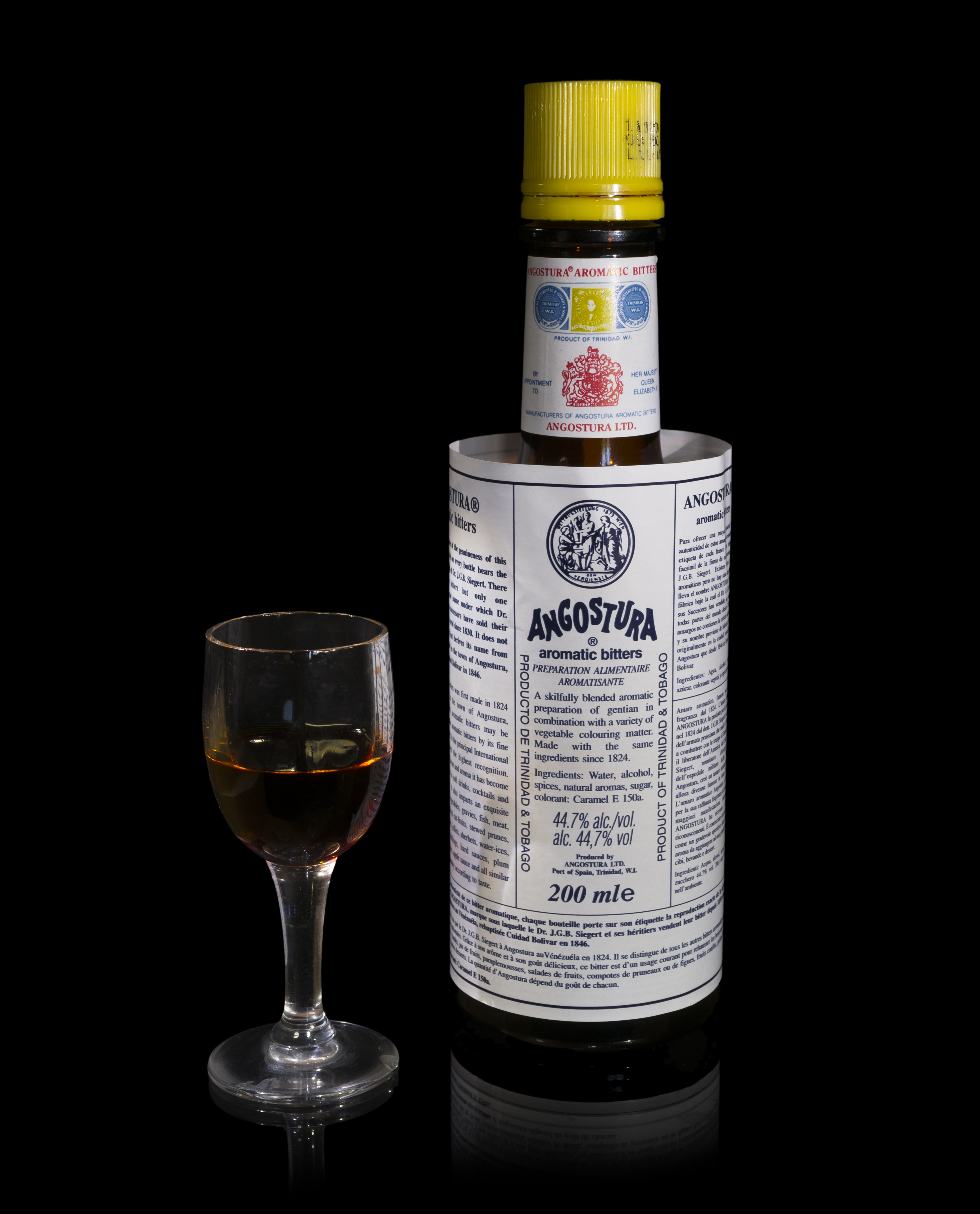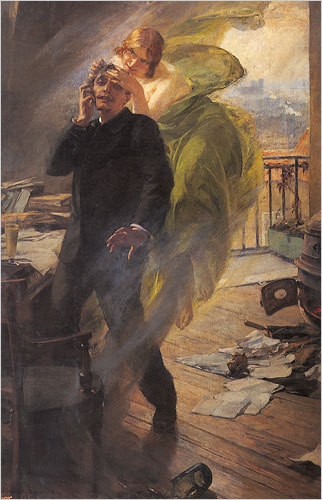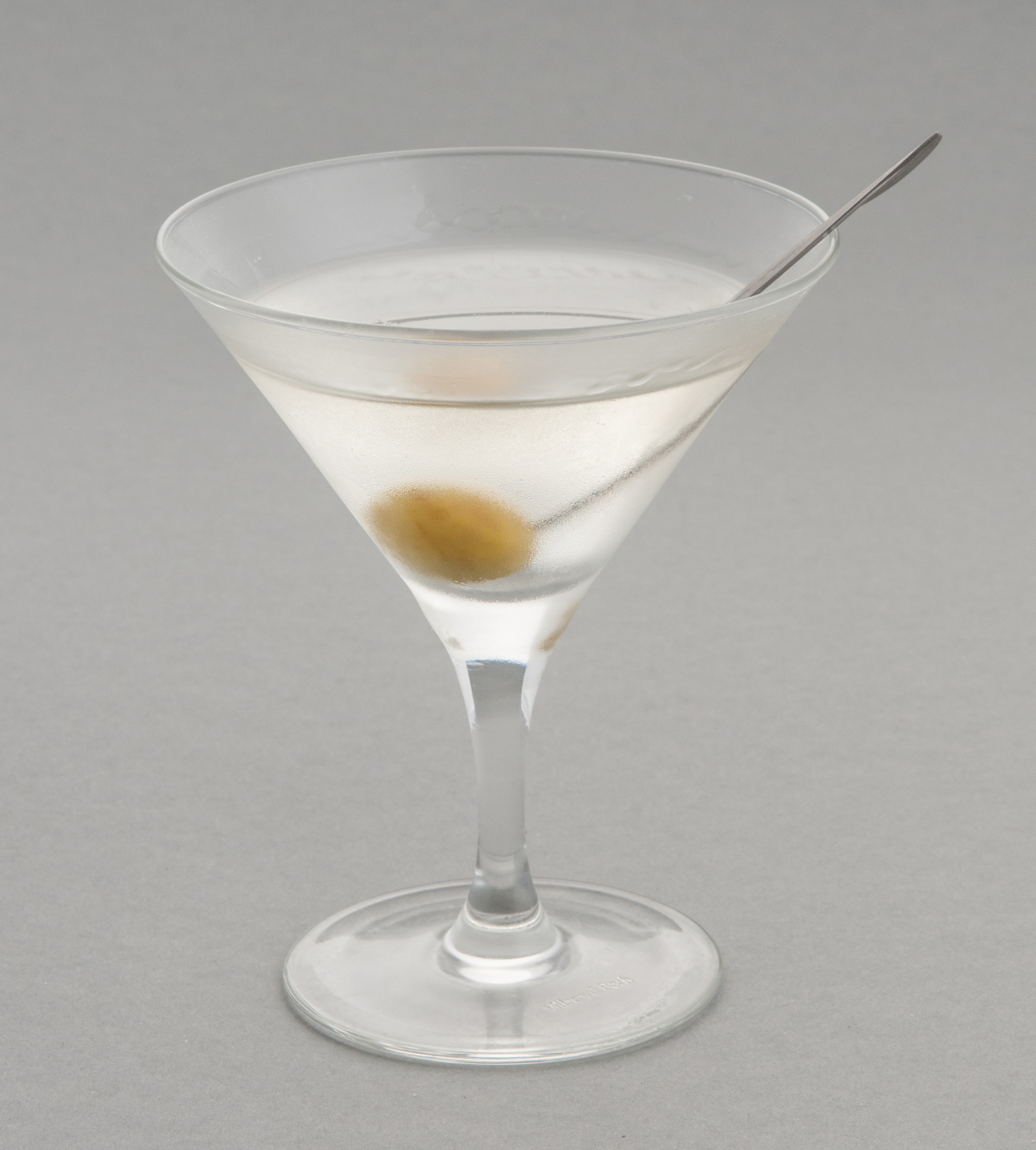|
Sazerac
The Sazerac is a local variation of a cognac or whiskey cocktail originally from New Orleans, named for the ''Sazerac de Forge et Fils'' brand of cognac brandy that served as its original main ingredient. The drink is most traditionally a combination of cognac or rye whiskey, absinthe, Peychaud's Bitters, and sugar, although bourbon whiskey is sometimes substituted for the rye and Herbsaint is sometimes substituted for the absinthe. Some claim it is the oldest known American cocktail, with origins in antebellum New Orleans, although drink historian David Wondrich is among those who dispute this, and American instances of published usage of the word ''cocktail'' to describe a mixture of spirits, bitters, and sugar can be traced to the dawn of the 19th century. Characteristics The defining feature of the Sazerac is its method of preparation, which commonly involves two chilled old-fashioned glasses. The first glass is swirled with a wash of absinthe for its flavor and strong sce ... [...More Info...] [...Related Items...] OR: [Wikipedia] [Google] [Baidu] |
Sazerac Company
Sazerac Company, Inc is a privately held American alcoholic beverage company headquartered in Metairie in the metropolitan area of New Orleans, Louisiana, but with its principal office in Louisville, Kentucky. The company is owned by billionaire William Goldring and his family. , it operated nine distilleries, had 2,000 employees, and operated in 112 countries. It is one of the two largest spirits companies in the United States, with annual revenue of about $1 billion made from selling about 300 mostly discount brands. History The company was founded after the purchase of a bar known as the Sazerac Coffee House in 1869 by Thomas H. Handy. The coffee house itself had been established in 1850. After its purchase, Handy's company began to acquire and market brands of liquor. According to the company, the Sazerac Coffee House had been named after a cocktail called the Sazerac that was created in the mid-1800s by the immigrant Antoine Amédée Peychaud, who operated a pharmacy on Ro ... [...More Info...] [...Related Items...] OR: [Wikipedia] [Google] [Baidu] |
Peychaud's Bitters
Peychaud's Bitters is a bitters distributed by the American Sazerac Company. It was originally created between 1849 and 1857 by Antoine Amédée Peychaud, a Creole apothecary from the French colony of Saint-Domingue (now Haiti) who traveled to New Orleans, Louisiana, around 1793. It is a gentian-based bitters, comparable to Angostura bitters, but with a predominant anise Anise (; '), also called aniseed or rarely anix is a flowering plant in the family Apiaceae native to Eurasia. The flavor and aroma of its seeds have similarities with some other spices and herbs, such as star anise, fennel, licorice, and ta ... aroma combined with a background of mint. Peychaud's Bitters is the definitive component of the Sazerac cocktail. It is currently produced at the Buffalo Trace Distillery in Frankfort, Kentucky. References Further reading * Toledano, Roulhac . ''The National Trust Guide to New Orleans'', Page 226. New Orleans, LA: John Wiley & Sons, 1996. . {{Alcoholic drink ... [...More Info...] [...Related Items...] OR: [Wikipedia] [Google] [Baidu] |
The Roosevelt New Orleans Hotel
The Roosevelt New Orleans in New Orleans, Louisiana, is a 504-room hotel owned by AVR Realty Company and Dimension Development and managed by Waldorf Astoria Hotels & Resorts. The hotel was originally built by Louis Grunewald, a German immigrant, and opened in 1893 as "The Hotel Grunewald." Hotel Grunewald The original hotel building was six stories tall and faced Baronne Street, encompassing street numbers 123 through 135. It was built after Grunewald's Music Hall was destroyed by fire in 1862. The building housed 200 rooms and opened in December 1893 to be ready for the 1894 New Orleans Mardi Gras season. The decision to build a hotel proved to be very sound as the other major hotel in the city, the St. Charles Hotel, was destroyed by fire soon after the Grunewald opened. Grunewald Annex As early as 1900, Grunewald began plans and eventually construction of an 'Annex' tower on the University Place side of the block. The cost of the new tower was reportedly $2.5 million and ... [...More Info...] [...Related Items...] OR: [Wikipedia] [Google] [Baidu] |
Herbsaint
Herbsaint is a brand name of anise-flavored liqueur originally created as an absinthe-substitute in New Orleans, Louisiana in 1934,Jay HendricksonAbsinthe in America I - The Story of Herbsaint, ''The Virtual Absinthe Museum'' at Oxygénée Ltd. (Access date December 7, 2010.) and currently produced by the Sazerac Company. It was developed by J. Marion Legendre and Reginald Parker of the city, who had learned how to make absinthe while in France during World War I. It was originally produced under the name "Legendre Absinthe", although it never contained absinthe's essential ingredient, Grande Wormwood ''(Artemisia absinthium)''. It first went on sale following the repeal of Prohibition, and was unique in its category as an absinthe substitute, as opposed to a pastis. The Federal Alcohol Control Administration soon objected to Legendre's use of the word "absinthe", so the name was changed to "Legendre ''Herbsaint''", French/Creole for "Herbe Sainte" (Sacred Herb), the ''Artemis ... [...More Info...] [...Related Items...] OR: [Wikipedia] [Google] [Baidu] |
Bitters
Bitters (plural also ''bitters'') is traditionally an alcoholic preparation flavored with botanical matter for a bitter or bittersweet flavor. Originally, numerous longstanding brands of bitters were developed as patent medicines, but now are sold as digestifs, sometimes with herbal properties, and as cocktail flavorings. Since cocktails often contain sour and sweet flavors, bitters are used to engage another primary taste and thereby balance out the drink and make it more complex, giving it a more complete flavor profile. Ingredients The botanical ingredients used historically in preparing bitters have consisted of aromatic herbs, bark, roots, and/or fruit for their flavor and medicinal properties. Some of the more common ingredients are cascarilla, cassia (Chinese cinnamon), gentian, orange peel, and cinchona bark. Most bitters contain both water and alcohol, the latter of which functions as a solvent for botanical extracts as well as a preservative. The alcoholic stre ... [...More Info...] [...Related Items...] OR: [Wikipedia] [Google] [Baidu] |
Absinthe
Absinthe (, ) is an anise-flavoured spirit derived from several plants, including the flowers and leaves of ''Artemisia absinthium'' ("grand wormwood"), together with green anise, sweet fennel, and other medicinal and culinary herbs. Historically described as a highly alcoholic spirit, it is 45–74% Alcohol by volume, ABV or 90–148 proof US. Absinthe traditionally has a natural green color, but may also be colorless. It is commonly referred to in historical literature as ' ("the green fairy"). It is sometimes mistakenly referred to as a liqueur, but is not traditionally bottled with added sugar, so is classified as a spirit. Absinthe is traditionally bottled at a high level of alcohol by volume, but it is normally diluted with water before being consumed. Absinthe originated in the canton of Neuchâtel in Switzerland in the late 18th century. It rose to great popularity as an alcoholic drink in late 19th- and early 20th-century France, particularly among Parisian artists and ... [...More Info...] [...Related Items...] OR: [Wikipedia] [Google] [Baidu] |
Rye Whiskey
Rye whiskey can refer to two different, but related, types of whiskey: * American rye whiskey, which is similar to bourbon whiskey, but must be distilled from at least 51 percent rye grain * Canadian whisky, which is often referred to as (and often labelled as) rye whisky for historical reasons, although it may or may not actually include any rye grain in its production process. American rye whiskey In the United States, rye whiskey is, by law, made from a mash of at least 51 percent rye. (The other ingredients in the mash are usually corn and malted barley.) It is distilled to no more than 160 U.S. proof (80% abv) and aged in charred, new oak barrels. The whiskey must be put in the barrels at no more than 125 proof (62.5% abv). Rye whiskey that has been aged for at least two years and has not been blended with other spirits may be further designated as straight, as in "straight rye whiskey". History Rye whiskey was historically the prevalent whiskey in the northeastern st ... [...More Info...] [...Related Items...] OR: [Wikipedia] [Google] [Baidu] |
Cognac
Cognac ( , also , ) is a variety of brandy named after the Communes of France, commune of Cognac, France. It is produced in the surrounding wine-growing region in the Departments of France, departments of Charente and Charente-Maritime. Cognac production falls under French appellation d'origine contrôlée (AOC) designation, with production methods and naming required to meet certain legal requirements. Among the specified grapes, Ugni blanc, known locally as Saint-Émilion, is most widely used. The brandy must be twice Distillation, distilled in copper pot stills and aged at least two years in French Aging barrel, oak barrels from Limousin or Forest of Tronçais, Tronçais. Cognac matures in the same way as whiskies and wines barrel-age, and most cognacs spend considerably longer "on the wood" than the minimum legal requirement. Production process Cognac is a type of brandy, and after the distillation and during the aging process, is also called ''eau de vie''. It is produc ... [...More Info...] [...Related Items...] OR: [Wikipedia] [Google] [Baidu] |
Pastis
Pastis (; oc, Pastís, ; or ) is an anise-flavoured spirit and apéritif traditionally from France, typically containing less than 100 g/L sugar and 40–45% ABV (alcohol by volume). Origins Pastis was first commercialized by Paul Ricard in 1932 and enjoys substantial popularity in France, especially in the southeastern regions of the country, mostly Marseille, (Bouches-du-Rhône) and the Var department. Pastis emerged some 17 years after the ban on absinthe, during a time when the French nation was still apprehensive of high-proof anise drinks in the wake of the absinthe debacle. The popularity of pastis may be attributable to a penchant for anise drinks that was cultivated by absinthe decades earlier, but is also part of an old tradition of Mediterranean anise liquors that includes sambuca, ouzo, arak, rakı, and mastika. The name "pastis" may be derived from Occitan "''pastís''," a mash-up or blend, or French "''pastiche''," a stylistic imitation. Composition By lega ... [...More Info...] [...Related Items...] OR: [Wikipedia] [Google] [Baidu] |
Cocktail
A cocktail is an alcoholic mixed drink. Most commonly, cocktails are either a combination of spirits, or one or more spirits mixed with other ingredients such as tonic water, fruit juice, flavored syrup, or cream. Cocktails vary widely across regions of the world, and many websites publish both original recipes and their own interpretations of older and more famous cocktails. History The origins of the word ''cocktail'' have been debated (see section Etymology). The first written mention of ''cocktail'' as a beverage appeared in ''The Farmers Cabinet,'' 1803 in the United States. The first definition of a cocktail as an alcoholic beverage appeared three years later in ''The Balance and Columbian Repository'' (Hudson, New York) May 13, 1806. Traditionally, cocktail ingredients included spirits, sugar, water and bitters, however, this definition evolved throughout the 1800s, to include the addition of a liqueur. In 1862 Jerry Thomas published a bartenders: guide called ''How ... [...More Info...] [...Related Items...] OR: [Wikipedia] [Google] [Baidu] |
Apothecary
''Apothecary'' () is a mostly archaic term for a medical professional who formulates and dispenses '' materia medica'' (medicine) to physicians, surgeons, and patients. The modern chemist (British English) or pharmacist (British and North American English) now perform this role. In some languages and regions, the word "apothecary" is still used to refer to a retail pharmacy or a pharmacist who owns one. Apothecaries' investigation of herbal and chemical ingredients was a precursor to the modern sciences of chemistry and pharmacology. In addition to dispensing herbs and medicine, apothecaries offered general medical advice and a range of services that are now performed by other specialist practitioners, such as surgeons and obstetricians. Apothecary shops sold ingredients and the medicines they prepared wholesale to other medical practitioners, as well as dispensing them to patients. In 17th-century England, they also controlled the trade in tobacco which was imported as a me ... [...More Info...] [...Related Items...] OR: [Wikipedia] [Google] [Baidu] |
French Quarter
The French Quarter, also known as the , is the oldest neighborhood in the city of New Orleans. After New Orleans (french: La Nouvelle-Orléans) was founded in 1718 by Jean-Baptiste Le Moyne de Bienville, the city developed around the ("Old Square" in English), a central square. The district is more commonly called the French Quarter today, or simply "The Quarter," related to changes in the city with American immigration after the 1803 Louisiana Purchase. Most of the extant historic buildings were constructed either in the late 18th century, during the city's period of Spanish rule, or were built during the first half of the 19th century, after U.S. purchase and statehood. The district as a whole has been designated as a National Historic Landmark, with numerous contributing buildings that are separately deemed significant. It is a prime tourist destination in the city, as well as attracting local residents. Because of its distance from areas where the levee was breached during ... [...More Info...] [...Related Items...] OR: [Wikipedia] [Google] [Baidu] |






